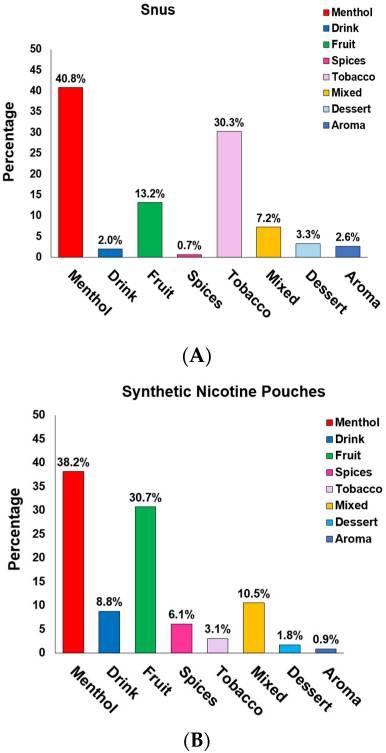Picture an artist wearing a blindfold, dipping his brush into paint and applying it to the canvas. Each stroke he makes is instinctive, born from years of training, muscle memory, and a keen sense of imagination. The result might be something truly stunning… or an absolute chaos. Now, imagine an artist equipped with clear vision, able to see and process every detail at once. This is the potential dichotomy of synthetic data! In the world of artificial intelligence, synthetic data functions like an abstract painter, creating a realm of possibilities. But there’s a cautionary tale here: synthetic data, like its eclectic artistic counterpart, can breed chaos as much as beauty. It can be a dangerous teacher, leading us into a future fraught with unknown consequences. Let’s dive deep into this fascinating and precarious world.
Table of Contents
- Understanding the Concept of Synthetic Data
- Unfurling the Risks and Downfalls of Synthetic Data
- Synthetic Data as a Misleading Mentor: A Deep Dive
- Practical Steps to Mitigate the Risks of Synthetic Data
- The Ideal Approach: Balancing Real and Synthetic Data
- Wrapping Up

Understanding the Concept of Synthetic Data
Synthetic data, fundamentally, are artificial data points that are modelled to simulate real world phenomena. Especially in the digital era we’re currently experiencing, with Artificial Intelligence (AI) and Machine Learning (ML) technologies burgeoning, synthetic data could be perceived as an immense, promising reservoir of knowledge. But, it’s crucial to discern that it isn’t without its pitfalls.
How synthetic data is generated is an essential aspect to comprehend. Generally, its generation is based on statistical and probabilistic methods. There are different means of generating synthetic data; agent based modelling where agents, based on certain rules, produce data; system dynamics modelling where relationships between different system inputs create data; and deep learning algorithms that generate data based on their training.
-
- Agent based modelling
-
- System dynamics modelling
-
- Deep learning algorithms
However, with the use of synthetic data, there’s also an intricate challenge. It’s deceitful nature of according false positives or negatives in data assessment could lead to flawed conclusions. This could lead to operational inefficiencies and financial losses. Additionally, synthetic data’s incapability to represent unpredictable human behavior or unanticipated events could act as slow-acting poison to systems dependent on it. Confusions and misinterpretations often occur, as synthetic data sometimes involves assumptions or decisions that are not explicitly articulated by its creator.
| Synthetic Data Advantages | Synthetic Data Disadvantages |
|---|---|
| Easy to generate large volumes | May provide false positives/negatives |
| Safeguards individual privacy | Unable to predict human behaviour |
| Friendly for AI/ML training | Assumptions may not be explicit |
Thus, it’s evident that while synthetic data can be massively beneficial, especially in areas like AI, where large volumes of data for training are necessary, it’s not devoid of its hazardous sides. To avoid being misled by this ‘dangerous teacher’, the key lies in understanding these potential pitfalls and formulating measures to mitigate their risks during its application.

Unfurling the Risks and Downfalls of Synthetic Data
While the allure of synthetic data using AI is hard to resist for a plethora of industries, it’s essential to diligently comprehend the entailed complications before making a commitment. Synthetic data—an artificially manufactured set of data mimicking real-world situations—teems with risk factors. Its manifestations and implications can become increasingly deceptive due to its inherently artificial nature. One of the transgressions is privacy threats. With data intercepted at multiple points, exposure to leakage and voyeurism remains omnipresent. Surreptitious surveilling leads to heightened vulnerability amongst unsuspecting users who unwittingly become fodder for these predatory systems.
“Remember: information from synthetic data may look and feel real, but they are often far from the truth.”
What makes the situation even more precarious is the inaccuracy of synthetic data. Let’s hatch this point in detail. While synthetic data appears to represent real-life scenarios accurately, the data generations might not encapsulate the variances and uncertainties inherent in naturally occurring data. This could lead to inaccurate decision-making, forcing businesses to pay a hefty price.
| Aspect | Real Data | Synthetic Data |
| Accuracy | High | Can be Blue-sky |
| Privacy | Sensitive | Potential Breach |
| Complexity | High | Simplified |
Synthetic data also presents ethical dilemmas that perplex stakeholders. Consider implicitly biased AI systems that amplify socio-cultural prejudice, encouraging biased decision-making processes and uneven power dynamics. Also, deceptive representations of synthetic data deter stakeholders from recognizing the actual downfalls of synthetic data.
-
- Heightened bias in AI models
-
- Misrepresentation of socio-cultural realities
-
- Uneven power distributions being promoted
In conclusion, while synthetic data can undoubtedly offer innovative solutions, dynamic potentialities, and revolutionary seismic shifts, we cannot sidestep the risks and downfalls that shadow this exciting frontier. In an era defined by data-driven decision-making, the intriguing paradox that the synthetic data presents—an amalgamation of digital utopia and dystopian realities—needs careful navigation to ensure data ethics, accuracy, and privacy aren’t compromised.

Synthetic Data as a Misleading Mentor: A Deep Dive
While the explosion of data driven decisions has provoked a fascination towards Synthetic Data, it’s vital to tread with caution. Smitten by its lofty promises of privacy and copious amounts of cheaper datasets, developers often overlook the darker corners of this tool.
Markedly, synthetic data is a generative model’s interpretation of the original data, and this interpretative nature raises robustness concerns. Since the generation of synthetic data is inherently dependent on the model’s understanding, it shapes a bias in data representation. No model is insusceptible to fault, hence, the synthetic data generated also comes with inherent biases and errors.
-
- Bias in Data: Generative models can unconsciously amplify existing biases in the original data.
-
- Data Privacy : Even though synthetic data is meant to preserve privacy, there can be instances of privacy leakage if not generated correctly.
-
- Erroneous Interpretation: Invalid correlations might be induced by poorly trained generative models.
Let’s illustrate this using a simple table:
| Pros | Cons |
|---|---|
| Promises Data privacy | Can lead to privacy leakages |
| Generates copious amounts of cheaper data | Can amplify existing biases |
| Help mitigate overfitting | Can cause invalid correlations |
Moving forward, while the synthetic data market is expected to witness a staggering growth in the upcoming years, it’s important for businesses and developers alike to wisely utilize this tool. Blindly following synthetic data like a pied piper can lead one off the cliff. Remember, synthetic data is a powerful tool, but approaching it as an infallible mentor can be dangerously misleading.

Practical Steps to Mitigate the Risks of Synthetic Data
Implementing proper data governance protocols is the first step towards safeguarding against the risks associated with synthetic data. Having a clear and robust policy regarding data collection, storage, and usage will go a long way in ensuring the security of your synthetic data. The policies must be comprehensive and cover all aspects of data security, ranging from encryption and access controls to data retention and disposal procedures.
Consider incorporating differential privacy into your synthetic data generation process. This involves introducing random ‘noise’ into the dataset which maintains the privacy of the individual data points while still preserving the overall statistical patterns. The introduction of randomness in the dataset reduces the probability of duplicating individuals’ data or revealing sensitive information.
Using such methods, we can mitigate the risks associated with synthetic data while still leveraging its vast benefits.
The limitation of synthetic data is that it may not completely reflect real-world scenarios. Therefore, it’s essential to keep the use of synthetic data in check by validating its representativeness and relevance against real data sets on a regular basis. Establishing safeguards to ensure that models trained on synthetic data are subsequently tested on real-world data before deployment can help maintain a balance.
| Differential Privacy | Organizational Protocols | Data Validation |
| Introducing randomness | Clear policies & procedures | Regular checks against real data |
Adopting security measures such as pseudonymization and anonymization can also be used to protect synthetic data. Pseudonymization involves replacing identifying fields within a data record with artificial identifiers or pseudonyms. On the other hand, anonymization completely removes any identifiable information, rendering it impossible to link the data back to an individual.
- Pseudonymization: Replacing identifiable fields with pseudonyms.
- Anonymization: Removing all identifiable information.
Though these measures require effort and vigilance, the benefits of synthetic data far outweigh the complications. With a proactive approach, organizations can significantly reduce the inherent risks of synthetic data and harness its true potential.

The Ideal Approach: Balancing Real and Synthetic Data
If we consider synthetic data as a teacher, it’s smart and efficient but lacks the “real world” experience. How can we balance this with real, valuable, learned-in-the-trenches data? The answer lies in using a blend of both real and synthetic data.
First off, it’s essential to identify the strengths and weaknesses of both types of data. Here’s a simple comparison:
| Real Data | Synthetic Data |
|---|---|
| More precise, accurate and reliable in terms of real-world applicability | Generated in controlled environments, offering scalability and diversity |
| Hard to collect in large volumes | Easy to generate in mass quantities |
| Raises privacy concerns | Eliminates privacy issues, as it’s entirely artificial |
The key to achieving the perfect balance starts with assessing your project’s needs. In some cases, synthetic data proves to be of more value, such as when testing new algorithms or modelling complex scenarios. From a privacy perspective, synthetic data is also a safer choice. But when you need data that perfectly mirrors real-world behavior, real data becomes invaluable. Also, real data helps to wipe away the inherent bias that can be present in synthetic data because of human input during its generation.
Lastly, a harmonious blend of both types can be considered the best approach to achieve maximum results in diverse scenarios. Utilizing synthetic data for initial learnings, hypothesis building and testing, followed by application and fine-tuning with real data, could make for a powerful strategy. With this approach, one can harness the strengths of both data types while nullifying their weaknesses.
Wrapping Up
As the sun sets over the horizon of our digital world, we are left gazing upon the burgeoning popularity of synthetic data like explorers squinting at a new continent. Yet as much as we lust for the possibilities this new found territory may hold, we must also remember to navigate it with caution and wisdom. Bereft of its real-world checks and balances, synthetic data is akin to a charismatic teacher holding a double-edged sword. While unrivaled in its ability to impart wisdom, it is also capable of sowing seeds of bias and misinformation if not critically examined. The challenge of our time is not utilizing this teacher, rather it is harnessing its potential while keeping its more intimidating aspects at bay.
As we journey onwards in this digital odyssey, let us wield the compass of ethical judgment and the map of empirical truth in our quest for advanced AI systems. Synthetic data is indeed a powerful scribe, but the script which it writes must be carefully scrutinized and, if need be, amended. So, let us march forward, aware of the pitfalls, mindful of the consequences, ever vigilant in our pursuit of a just and equitable digital realm. It’s a brave new world out there, a world powered by technology, driven by data, real or synthetic, and above all, guided by the moral compass of humanity.






